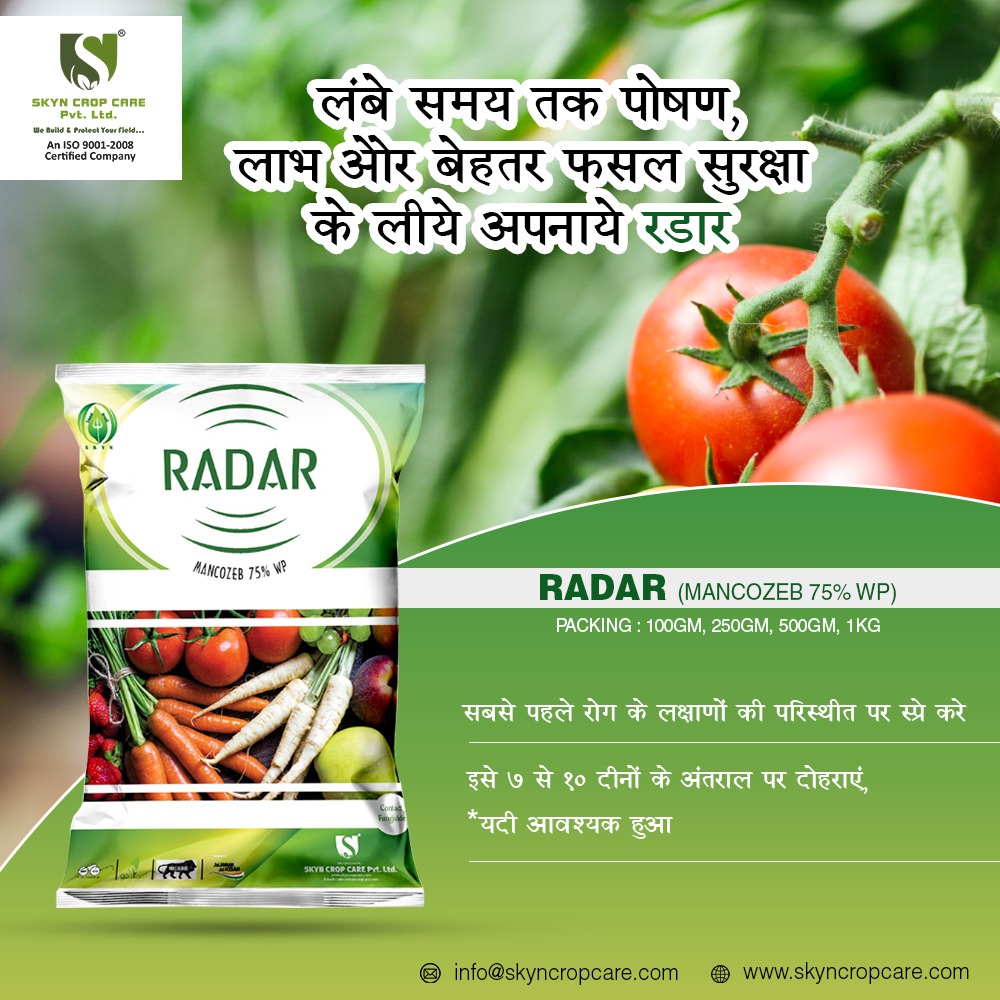- Have any questions?
- +91 6354095326
- [email protected]
Rice Blast Control With Radar Fungicide

Protect Your Mango Trees From Hoppers With the Help of V-tara insecticide
September 12, 2020
How to Control Soybean Rust With Skyn Crop Care’s Propstar
September 17, 2020Symptoms
Impact indications can happen on leaves, leaf collars, hubs and panicles. Leaf spots are regularly curved (football formed), with dark white habitats and earthy colored to red-earthy colored edges (Figure 1). Completely created leaf injuries are roughly 0.4 to 0.7 inch long and 0.1 to 0.2 inch wide. Both the shape and the shading fluctuate contingent upon the earth, age of the sore and rice assortment. Injuries on leaf sheaths, which seldom create, look like those on leaves.
The most genuine harm happens when the parasite assaults hubs just beneath the head (Figure 2). The stems regularly break at the ailing hub. This phase of the sickness is alluded to as “bad neck.” Disease in the hub forestalls the progression of water and supplements to the parts and they will quit creating. Heads of plants harmed along these lines might be totally clear (Figure 3) to almost ordinary, contingent upon the phase of head improvement when contamination happens. The ineffectively evolved grain for the most part separates seriously in processing, lessening quality.
Figure 1
Impact side effects show up on leaves as curved spots with light-shaded focuses and ruddy edges.
Figure 2
The most genuine harm from rice impact happens when the ailment assaults the hubs just underneath the head, frequently making the stem break.
Figure 3

Shoot harm at the hubs disturbs the progression of water and supplements to the bits, stopping their turn of events.
Control
Use preventive measures
- Join or roll the rice stubble not long after gather to advance early decay.
- Plant the least-defenseless assortments and utilize an expansive range seed treatment.
- Develop rice in open fields liberated from timberlines especially on east and south sides
- Develop rice in fields where flood levels are effectively kept up. Harm from impact can be decreased by keeping soil overflowed 2 to 4 inches deep from the time rice plants are 6 to 8 inches tall until depleting for reap. Depleting for straighthead is contradictory with the flooding required for impact control, so evade fields with a background marked by straighthead and assortments powerless to straighthead, or plant impact safe assortments in these fields.
- Seed over a scope of time to spread the heading dates. Notwithstanding, abstain from planting late on the grounds that impact will be more extreme.
- Seed to a remain of 15 to 20 plants for each square foot.
- Keep away from inordinate nitrogen application rates and apply close to 30 pounds for each section of land of nitrogen per application at middle of the season. In fields with a background marked by impact, consistently split applications.
Use fungicides
Scout fields for shoot indications from the seedling through heading stages (see Scouting). On the off chance that side effects are found, get ready to utilize fungicides at the late boot stage and again when 80 to 90 percent of plants are going.
Apply fungicides during the time span anticipated by the DD50 program,(opens in new window) which is around 5 to 7 days before heading (late boot stage). Fungicides are particularly required if impact side effects have been seen in the field and the assortment is truly vulnerable. Fungicides ought to be applied a second time around two days after 50 percent heading (90 percent head exsertion). In uniform stands, 90 percent heading will happen in 4 to 5 days after the primary heads are noticeable.
The choice to treat is all the more handily made when at least one of the accompanying variables exist:
- A defenseless assortment is developed in the field.
- The harvest has over the top development and a thick shade.
- Leaf side effects have been found in the field.
- Infection is available in southern pieces of the field.
- Cool, stormy, or overcast climate with high stickiness and weighty dews is anticipated during heading.
The advancement of this infection is hard to anticipate, and fungicide medicines are costly. Subsequently, you should treat based on the above variables or consequently treat the field with a fungicide on the off chance that you are reluctant to chance illness harm.






